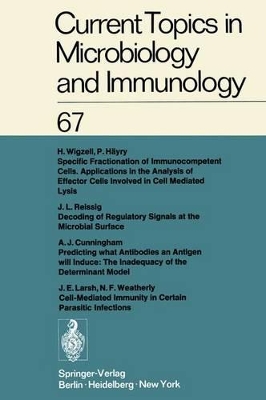Prominent progress in molecular biology was only made when it became possible to separate functionally distinct molecules by taking advantage of their biophysical properties. Likewise, the analysis of the functions of hetero- geneous populations of immunocompetent cells, as to the functional properties of their various subpopulations, can not be done until these can be isolated in reasonably pure form by selective fractionation. During the last few years significant advances have been made in this field, and cells have been separated according to size, density or charge (MILLER et aI. , 1969; SHORTMAN, 1968; ANDERSSON, 1973 c), or by taking advantage of more specific surface markers to allow selective depletion or enrichment of a given subpopulation of cells (WIGZELL and ANDERSSON, 1971). Although separation techniques have been used in a variety of cellular systems, they have been particularly useful in the study of reticuloendothelial cells and primarily in the study of cells partici- pating in the immune responses.
Quite extensive reviews have been written which well cover the methods used for separation of cells and the results obtained with the various approaches (WIGZELL and ANDERSSON, 1971; SHORTMAN, 1972). To review this work is becoming a more and more voluminous task. As data rapidly accumulate, we will not try to make such a complete review.
- ISBN10 3540068384
- ISBN13 9783540068389
- Publish Date 11 November 1974
- Publish Status Out of Print
- Out of Print 8 June 2021
- Publish Country DE
- Publisher Springer-Verlag Berlin and Heidelberg GmbH & Co. KG
- Imprint Springer-Verlag Berlin and Heidelberg GmbH & Co. K
- Format Hardcover
- Pages 166
- Language English
